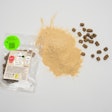
Pet treats have been a fertile area for innovation and new product introductions. When planning a new pet treat or other food product, professionals can ask themselves six questions to help focus their efforts and improve their chances of success, Aaron Merrell, CEO and co-founder, Plato Pet Treats, said during his presentation at Petfood Essentials on April 30 in Kansas City, Missouri.
1. Why am I bringing this to market?
Before starting to develop pet treats, a company benefits from defining itself and diving into an understanding of why the business exists beyond dollars and cents, Merrell said. Likewise, new pet treat development benefits from first identifying why that product should go to market.
“It's really important to take the time and energy to think through why what you're doing should matter,” he said. “Think about why you want your product, you want your company, you want your principles, why you want it to matter. And then that can drive the decisions that you make about the type of product that you come up with.
2. Who is my customer?
Defining your customer is fundamental, Merrell said. Understand a brand’s target demographic influences positioning strategy, price points, features and benefits. A marketing message can then be built to tell that story.
“Figuring out how to make your customer the hero is very important, because they're not buying that pet treat to support your company,” Merrell said. “They're buying it to support their pet and to feel good about what they're doing.”
3. Where will I find my customer?
Pet food retailing includes a mix of traditional brick-and-mortar retailers, both specialty and mass market, online platforms, direct-to-consumer sales, subscriptions and other methods.
“It's a changing landscape, the rules are constantly changing, for how to get in front of your those eyeballs,” Merrell said.
Having a firm definition of the target customer can help a company determine where that group shops.
4. What will I offer them?
Market research is critical when deciding what actual product you will create, he said. Whether purchased or conducted in-house, studies allow benchmarking against other brands.
“You can also benchmark other products from a form factor or texture, or features and benefits standpoint,” Merrell said. “Doing that product comp analysis is very important to look at which trends are growing, and which products are doing the best and what claims are they making on their packaging. There's a lot of data out there.”
5. How do I plan on manufacturing my products?
Once the new product has been conceptualized, it needs to be brought into reality. Pet treat makers have two main options for how to make their items.
“There's the DIY where you do your own manufacturing, and that has some very strong pros and some very stark costs associated with it,” he said. “Then there's finding a manufacturer to work for you. And there are different challenges with that.”
Those new pet treats have a stronger chance of success with pet owners, if product developers answer these five questions first.



















